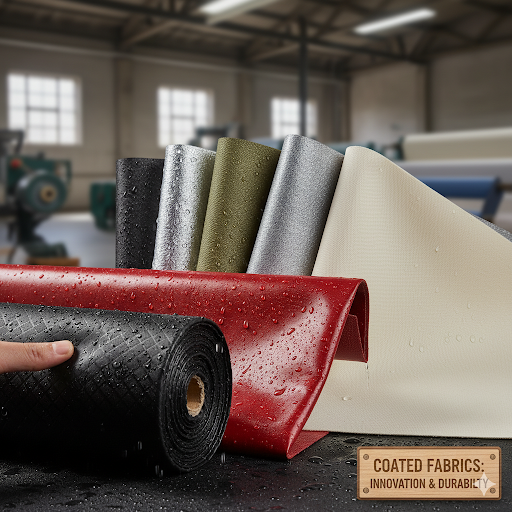The coated fabrics market is undergoing a strong growth phase, driven by rising demand across automotive, industrial, protective clothing, and construction sectors. These engineered textiles combine base fabrics with polymer or rubber coatings, enhancing durability, resistance, and functionality. With a growing emphasis on sustainability and innovation, coated fabrics are becoming essential in applications that demand strength, flexibility, and advanced performance.
What are Coated Fabrics?
Coated fabrics are textiles that are treated with polymer coatings such as PVC, polyurethane (PU), or rubber to improve resistance against abrasion, water, fire, and chemicals. Unlike conventional fabrics, these coated variants offer a combination of aesthetics and high performance, making them suitable for industries ranging from fashion and sportswear to defense and aerospace.
Coated Fabrics Market size was USD 23.7 billion in 2022 and is projected to reach USD 29.8 billion by 2028, at a CAGR of 3.9% from 2023 to 2028.
Key Applications Driving Demand
Automotive & Transportation: PVC and PU coated fabrics are extensively used in vehicle interiors, seating, airbags, and protective covers. The rising adoption of electric vehicles (EVs) is further creating new demand for lightweight, eco-friendly coated textiles.
Protective Clothing: In sectors like defense, healthcare, and industrial safety, coated fabrics provide flame resistance, chemical protection, and waterproofing, ensuring worker safety in harsh environments.
Construction & Infrastructure: From roofing membranes to architectural shading, coated fabrics are preferred for their strength and weather-resistant properties.
Industrial Uses: Conveyor belts, tarpaulins, tents, and gaskets rely heavily on coated fabrics due to their durability and adaptability to demanding conditions.
Market Trends and Innovations
One of the most notable shifts in the coated fabrics market is the push toward sustainable solutions. Manufacturers are moving away from traditional PVC-based coatings to bio-based or recyclable alternatives. Eco-friendly coated fabrics are gaining traction in consumer goods and transportation industries where sustainability is a priority.
Another trend shaping the market is the rise of smart textiles. With the integration of sensors and advanced coatings, fabrics are evolving into multifunctional materials used in wearables, defense systems, and healthcare.
Regional Market Insights
Asia-Pacific holds the largest share of the coated fabrics market, led by robust growth in automotive, construction, and industrial manufacturing sectors in China, India, and Southeast Asia.
North America is witnessing steady demand for coated fabrics in defense, aerospace, and healthcare industries, supported by advanced R&D in smart textiles.
Europe is focusing on eco-friendly coatings and innovations in lightweight fabrics, particularly for EV interiors and renewable energy applications.
Growth Drivers and Challenges
Key Growth Drivers:
- Increasing demand in automotive interiors and protective applications
- Rising urbanization and infrastructure development
- Shift toward sustainable and eco-friendly fabric coatings
- Expanding applications in aerospace and defense
Challenges:
- Fluctuating raw material costs
- Environmental concerns around PVC coatings
- High competition from uncoated synthetic fabrics in some applications
Future Outlook
The coated fabrics market is projected to continue its expansion, with opportunities in bio-based coatings, nanotechnology integration, and advanced performance fabrics. As industries push for materials that combine durability, aesthetics, and environmental responsibility, coated fabrics are expected to become a cornerstone of innovation in textiles.
Download PDF Brochure :
From protecting workers in hazardous industries to shaping the interiors of electric vehicles, coated fabrics are at the heart of modern material innovation. With strong demand across multiple industries and ongoing advancements in sustainable coatings, the coated fabrics market is set for significant transformation and growth in the coming decade.

